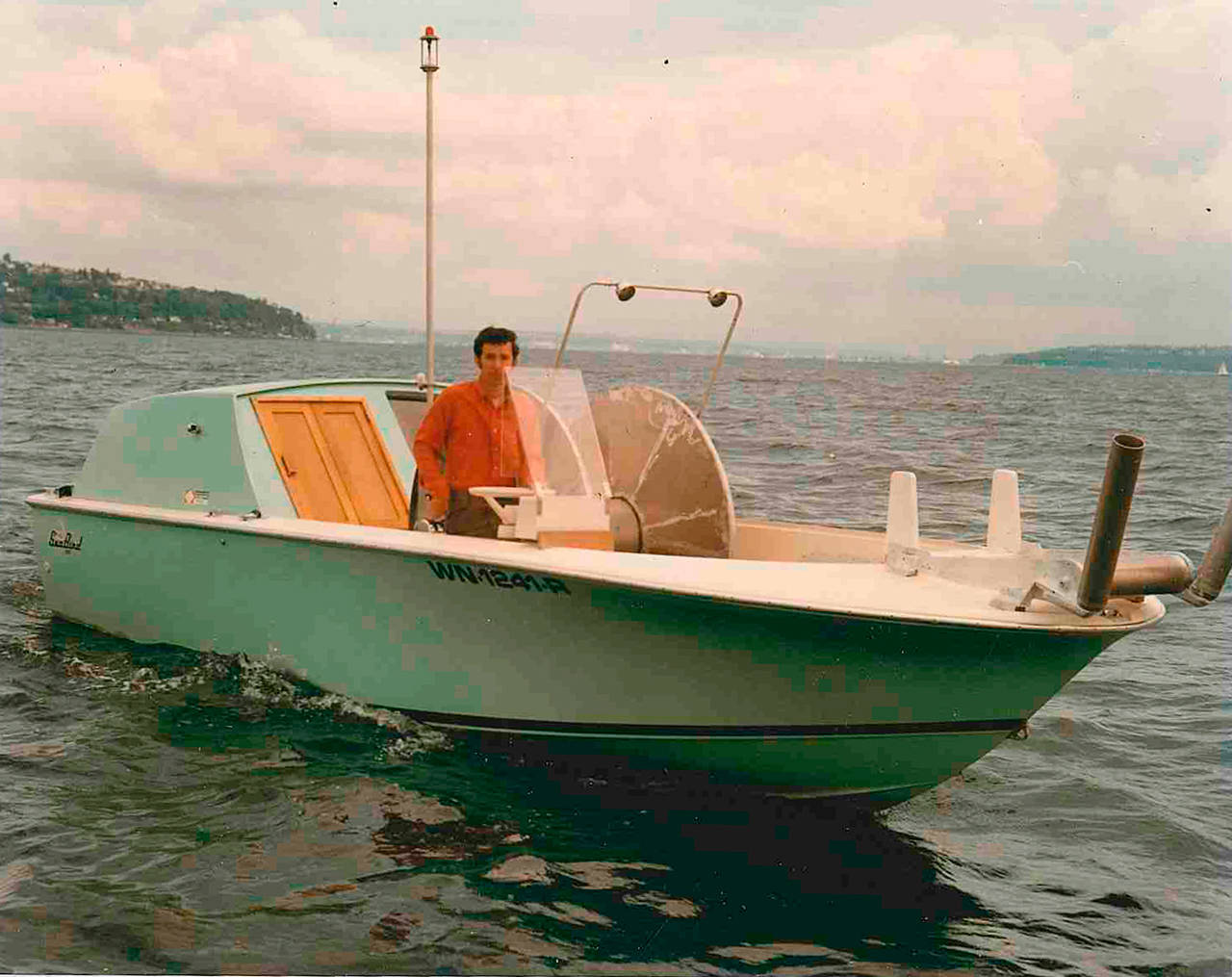If Ralph Bladt’s father had had his way, Ralph might never have left the water. As teenagers, he and younger brother Ron spent many nights, June-September, on the San Juan Strait, hauling in a livelihood on their father’s gillnetter. Their mom too “was a stern taskmaster,” says Ralph. “One night I came in early ’cause I wasn’t getting much action. She met me at the door: ‘Nope, you get back out there. This is a family business.’”
Gillnetting opened up as a career in Washington when fish traps were outlawed in 1934. With the canneries’ fishing monopoly broken, the “little guy” could now make a good living on the water if he worked hard.
The Bladts worked hard. Ralph was eight in 1953 when his dad became the fishing partner of Sebastian Jevick, owner of the Lopez Museum’s iconic Sally J. The family rented Howard Tralnes’ Barlow Bay house every summer. While the boys enjoyed playing with local kids, they knew every June meant painting the two wooden boats, and plenty of net mending.
After several years, the Bladts bought land above Agate Beach and built a tiny A-frame with an outhouse. 16-year-old Ralph inherited the old Evelyn as his dad moved up to the Jane B; then Ralph bought the high-speed Seabird and Ron got the Evelyn.
Ralph’s dad saw no reason why that life shouldn’t continue. Without consulting 18-year-old Ralph, he signed him up to work on a purse seiner in Alaska. Though unhappy, Ralph didn’t feel he had a choice—till his heart made the choice for him. Sudden heart palpitations (literal, not figurative) kept Ralph from the dangerous waters of Alaska. He was now free to follow that heart to college, against his father’s wishes. “My dad said, ‘You’re foolish; you have a way to make a good living now.’” But Ralph’s mother and grandmother urged him to follow his artistic talent.
Having supported himself by summer fishing, Ralph graduated from University of Washington in 1969 with a degree in industrial design. “I thought industrial design was a more practical way to use my art talent,” Ralph says—apparently correctly, as he immediately found a job. For ten years he worked at a design subcontractor for Boeing, developing commercial aircraft interiors, and spending his annual two-week vacation fishing. This double income allowed Ralph to prove his dad wrong.
From commercial planes, Ralph moved on to Volpar, a private aircraft company. He spent the next ten years creating luxurious airplane interiors for customers like Saudi royals and the King of Thailand (with touches like raw silk walls and rosewood filigree). More notorious clients included Khadafy and the Shah of Iran. Ralph relates regretfully how, after depositing the fleeing Shah in Libya, the pilots were so fearful of being charged with stealing state property that they returned the plane to Teheran…where Khomeini allowed it to bake on the tarmac, destroying all the interior work.
Ralph’s time with Volpar was stimulating, full of world travel. But the 1980s economic downturn forced the company to cut its workforce, including Ralph. He quickly found a niche at Seattle’s Delta Marine, making luxury yachts. Naval architecture was shifting radically, and Ralph’s training in contemporary design was much in demand. With Delta, Ralph designed three mega-yachts: the Pizzazz, the Princess Gloria, and the Alliance. The latter craft is still moored at Cap Santé Marina in Anacortes.
The 90s were a peak decade for Ralph, personally and professionally. He married longtime girlfriend Barbara Fulton, and his one-time boss from Boeing hired him away from Delta, with a salary increase.
For the next 16 years, Ralph worked his way up to become the lead designer for the interior of the 787. Boeing needed a look to match the cutting-edge technology of the aircraft’s totally composite structure and once again, Ralph’s training proved valuable.
Upon retirement, Ralph and Barb thought hard before moving full-time to Lopez, afraid life would be too quiet here. That problem was solved through volunteering: “the best way to get friends.” Over the years, the couple has been involved in the Lopez Center, the Chamber of Commerce, the Historical Society, and now the County Parks Board and the Home Tour Committee.
Currently, Ralph is creating a new identity: professional artist. Steven Hill, the award-winning plein air pastel artist, has become Ralph’s mentor, honing his skills in both watercolors and marketing. Ralph now joins painting societies, enters contests and has a painting on display at the American Marine Society in Oxenard, California. But his desire for national exposure is closer to Ralph’s heart than his wallet. “A lot of your worth is determined by your job,” he observes, “and when you retire, that goes away really fast.” That identity as Person of Skill is what Ralph missed, and what he relishes about painting. But he still finds time to get out on the water.



